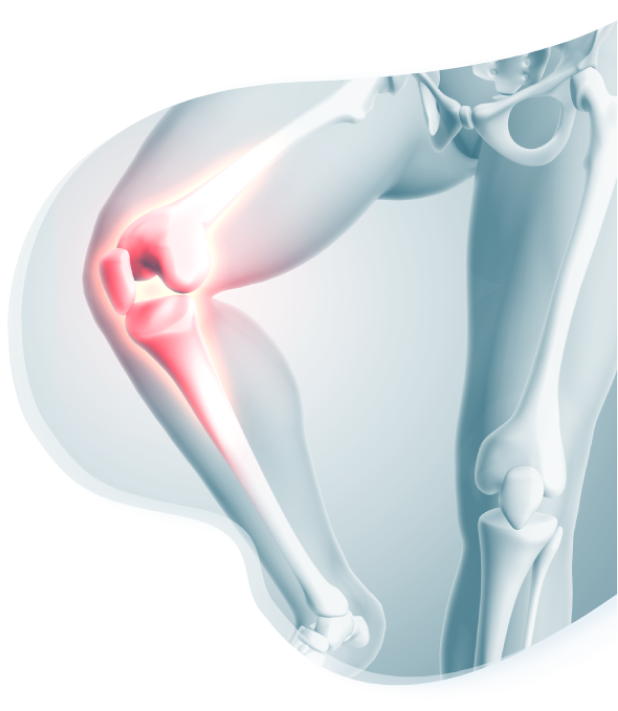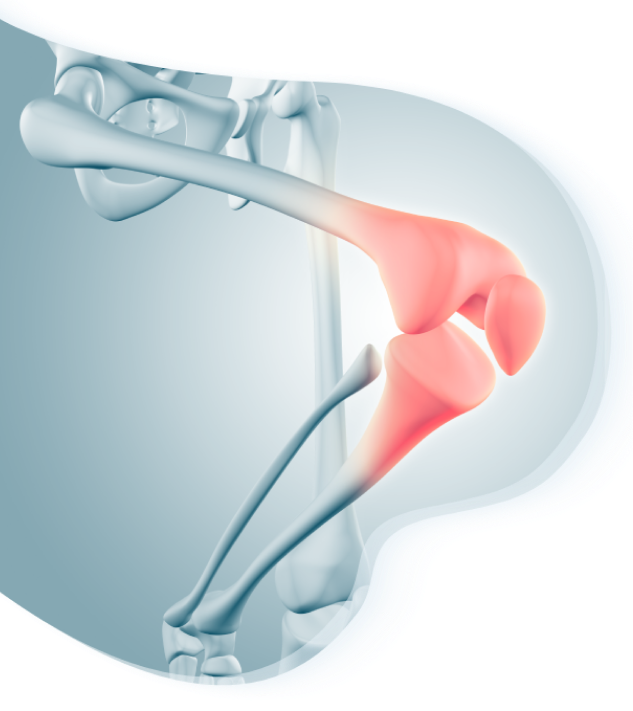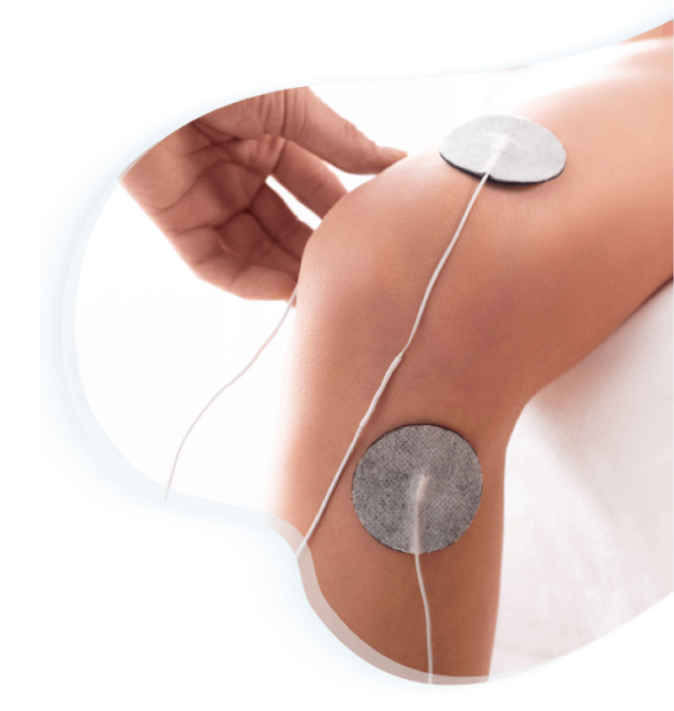Mini Knee
Many patients we see are wary of the lengthy recovery and rehabilitation times associated with traditional knee replacement surgery. We understand and strive to fix that. We are proud to offer a comprehensive protocol called “my mini-knee.” This minimally invasive knee replacement procedure allows most patients to walk within 30 minutes and return home within 2 hours. The approach is minimally invasive, allows for a rapid recovery, minimizes scar formation, and can be performed under local anesthesia. Our advanced practice protocols make recovery from joint replacement surgery easier, allowing active patients to get the care they need to return to the lives they love while minimizing pain and downtime.
Knee osteoarthritis is commonly treated with total knee replacement, which is considered the standard surgical procedure. Over the past few years, there has been a growing focus on minimally invasive techniques for knee replacement. These methods aim to reduce tissue damage and enhance patient recovery. Unlike traditional knee replacement procedures that typically involve larger 10-12 inch incisions, minimally invasive approaches employ significantly smaller incisions avoiding cutting the quadriceps muscle and tendon, responsible for knee bending, while accessing the knee joint.

Understanding Minimally Invasive Knee Replacement
Minimally invasive knee replacement, also known as minimally invasive total knee arthroplasty (TKA), is a surgical procedure designed to replace a damaged knee joint with an artificial implant while minimizing the disruption to surrounding tissues. This technique utilizes specialized instruments and smaller incisions compared to traditional knee replacement surgery.
Advantages of Minimally Invasive Knee Replacement
- Smaller Incisions: Minimally invasive techniques use smaller incisions, typically 3 to 5 inches in length, resulting in less scarring and reduced trauma to surrounding muscles and tissues.
- Faster Recovery: Patients often experience a quicker recovery and rehabilitation period compared to traditional knee replacement surgery. This means less time in the hospital and a faster return to daily activities.
- Less Blood Loss: The smaller incisions lead to less blood loss during the surgery, reducing the need for transfusions and minimizing the risk of complications.
- Reduced Pain: The minimally invasive approach aims to minimize trauma to the muscles and ligaments, resulting in less postoperative pain and a more comfortable recovery.
- Improved Cosmetic Outcome: The smaller incisions typically result in more aesthetically pleasing scars, contributing to a better cosmetic outcome for patients.

The Minimally Invasive Knee Replacement Procedure
Preparation
Before the surgery, the orthopedic surgeon will conduct a thorough evaluation, including medical history, physical examination, and imaging studies (X-rays and, in some cases, CT/MRI) to assess the extent of knee damage.
Anesthesia
A combination of General and/or regional anesthesia is administered to ensure the patient is comfortable and pain-free during the procedure. This is customized specifically for each patient.
Incision
The surgeon makes a small incision to access the knee joint, usually between the quadriceps tendon and patella.
Implant Placement
Using specialized instruments and a smaller incision, the damaged portions of the knee joint are removed, and the artificial knee implant is placed securely.
Closure
After confirming proper alignment and function, the incision is closed with sutures or staples.
Recovery and Rehabilitation
- Immediate Post-op: Patients are closely monitored in the recovery area, and pain management techniques are employed to ensure comfort.
- Hospital Stay: The hospital stay is typically shorter for minimally invasive knee replacement patients, often just a few hours.
- Physical Therapy: Physical therapy starts soon after surgery to improve strength, flexibility, and mobility of the knee. This is crucial for a successful recovery.
- Follow-up Care: Regular follow-up appointments with the surgeon are essential to monitor progress, address concerns, and adjust the rehabilitation plan as needed.

Is Minimally Invasive Knee
Replacement Right for You?
The decision to undergo minimally invasive knee replacement is a complex one that should be made in consultation with your orthopedic surgeon. Factors such as the severity of knee damage, overall health, and lifestyle goals will be considered to determine if this technique is the best fit for you.
If you're suffering from knee pain and seeking a solution, consult with a qualified orthopedic surgeon to explore your options and decide on the most appropriate treatment plan.
In conclusion, minimally invasive knee replacement offers several advantages over traditional knee replacement surgery, including smaller incisions, faster recovery, reduced pain, and improved cosmetic outcomes. Talk to your healthcare provider to determine the best approach for your unique situation.

Minimally Invasive Partial Knee Replacement
Understanding Minimally Invasive Partial Knee Replacement
Minimally invasive partial knee replacement, also known as unicompartmental knee replacement, is a surgical procedure that involves replacing only the damaged or diseased part of the knee joint, preserving the healthy portions. This technique uses specialized instruments and smaller incisions, minimizing trauma to surrounding tissues.

Advantages of Minimally Invasive Partial Knee Replacement
- Preservation of Healthy Tissue: Unlike total knee replacement, this approach preserves the undamaged parts of the knee, promoting a more natural joint function. Sadly, In many cases of osteoarthritis and all inflammatory arthritis, this is not a treatment option.
- Smaller Incisions: The surgical incisions are smaller, resulting in less scarring, reduced pain, and a faster recovery compared to traditional surgery.
- Quicker Recovery: Patients often experience a faster recovery, with less postoperative pain.
- Improved Range of Motion: Preserving healthy tissue can lead to better postoperative knee movement and improved overall function.
- Potential for Future Procedures: If needed, a minimally invasive partial knee replacement can be converted to a total knee replacement in the future.

The Minimally Invasive Partial Knee Replacement Procedure
Preparation
Before the surgery, a thorough evaluation is conducted, including a review of medical history, physical examination, and imaging studies (X-rays, MRI) to assess the extent of knee damage and determine the suitability for partial knee replacement.
Anesthesia
General or regional anesthesia is administered to ensure the patient is comfortable and pain-free during the procedure.
Incision
The surgeon makes a small incision to access the affected compartment of the knee joint, minimizing disruption to surrounding tissues.
Implant Placement
Using specialized instruments and a smaller incision, the damaged portions of the knee joint are carefully removed, and the artificial implant is inserted in the specific compartment.
Closure
After confirming proper alignment and function, the incision is closed with sutures or staples.
Recovery and Rehabilitation
- Immediate Post-op: Patients are closely monitored in the recovery area, and pain management techniques are employed to ensure comfort.
- Hospital Stay: The hospital stay is typically shorter for minimally invasive partial knee replacement patients, often ranging from 1 to 3 days.
- Physical Therapy: Physical therapy begins soon after surgery to improve strength, flexibility, and mobility of the knee. This is crucial for a successful recovery.
- Follow-up Care: Regular follow-up appointments with the surgeon are essential to monitor progress, address concerns, and adjust the rehabilitation plan as needed.

Is Minimally Invasive Partial Knee
Replacement Right for You?
The decision to undergo minimally invasive partial knee replacement is a significant one that should be made in consultation with your orthopedic surgeon. Factors such as the extent and location of knee damage, overall health, and lifestyle goals will be considered to determine if this technique is the most suitable for you.
If you're suffering from knee pain and seeking a targeted solution, consult with a qualified orthopedic surgeon to explore your options and decide on the most appropriate treatment plan.
Minimally invasive partial knee replacement offers several advantages over traditional knee replacement surgery, including preservation of healthy tissue, smaller incisions, quicker recovery, and improved range of motion. Talk to your healthcare provider to determine the best approach for your unique situation.
Contact Us Now
Business Hours
- Monday: 9:00 AM – 6:00 PM
- Tuesday: 9:00 AM – 6:00 PM
- Wednesday: 9:00 AM – 6:00 PM
- Thursday: 9:00 AM – 6:00 PM
- Friday: 9:00 AM – 6:00 PM
- Saturday: Open Selected Saturdays
- Sunday: Closed



